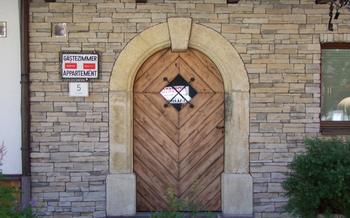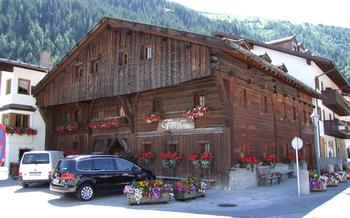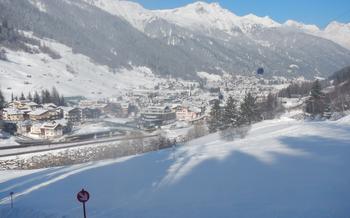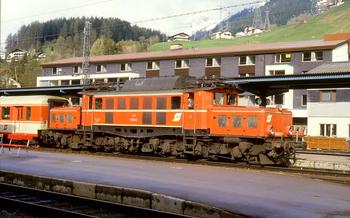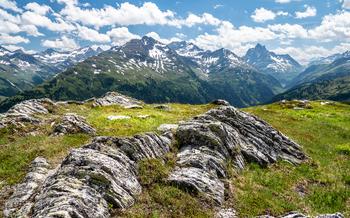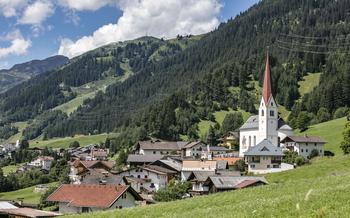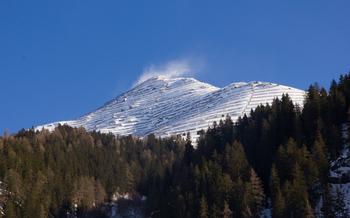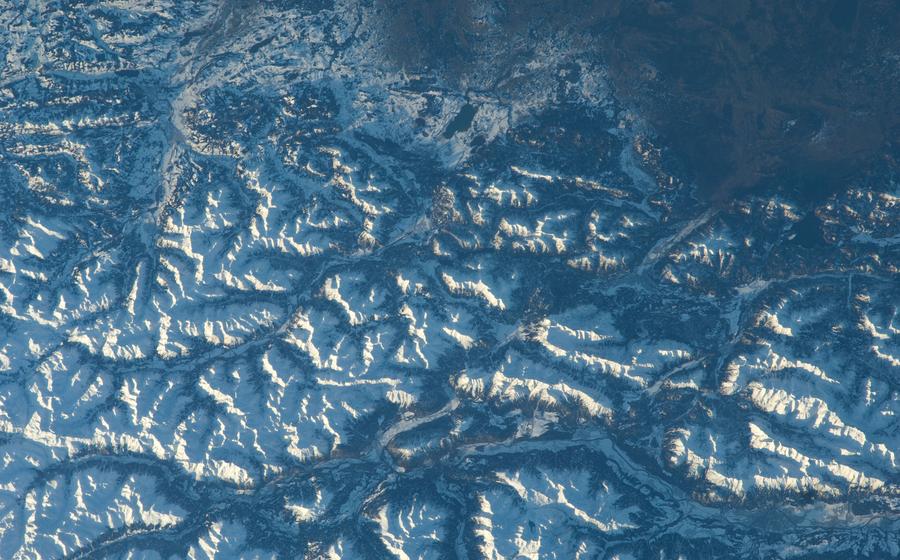
Lechtal Alps
- St. Anton am Arlberg: A Winter Wonderland
- Skiing in St. Anton am Arlberg
- The Arlberg Pass
- The Flexen Pass
- The Verwall Group
- The Lechtal Alps
- Hiking in the Lechtal Alps
- Mountain Biking in the Lechtal Alps
- Fishing in the Lechtal Alps
- Rafting and Canyoning in the Lechtal Alps
- Rock Climbing in the Lechtal Alps
- Mountain Huts in the Lechtal Alps
- Winter Sports in the Lechtal Alps
- Insider Tip: Off-the-Beaten-Path Gems in the Lechtal Alps
St. Anton am Arlberg: A Winter Wonderland
St. Anton am Arlberg is a picturesque village located in the heart of the Tyrolean Alps, renowned as a premier winter sports destination. Its history dates back to the Middle Ages when it served as a strategic trade route connecting the regions of Vorarlberg and Tyrol. In the late 19th century, St. Anton emerged as a popular skiing destination, attracting winter sports enthusiasts with its pristine slopes and stunning alpine scenery.
Today, St. Anton is a world-class ski resort, boasting an impressive network of over 300 kilometers of slopes, catering to skiers and snowboarders of all skill levels. The resort's slopes are renowned for their variety, ranging from gentle beginner slopes to challenging off-piste runs that cater to experienced skiers seeking a thrill. In addition to downhill skiing, St. Anton offers a variety of other winter activities, including cross-country skiing, tobogganing, ice skating, and snowshoeing, ensuring that visitors have a plethora of options to choose from.
Skiing in St. Anton am Arlberg
St. Anton am Arlberg is a skier's paradise, offering a wide variety of slopes for skiers of all levels. Beginners can find plenty of gentle slopes to practice on, while experts can challenge themselves on the more difficult runs. There are also plenty of off-piste opportunities for those who want to explore the backcountry.
For those new to skiing, there are several ski schools in St. Anton that offer lessons for all levels. There are also several ski rental shops where you can rent all the equipment you need.
After a long day on the slopes, there are plenty of ways to relax and enjoy the après-ski scene in St. Anton. There are several bars and restaurants to choose from, as well as a number of shops and boutiques. There is also a lively nightlife scene, with several nightclubs and discos to choose from.
Whether you are a beginner or an expert, St. Anton am Arlberg has something to offer every skier. With its beautiful scenery, challenging slopes, and lively après-ski scene, it is no wonder that St. Anton is one of the most popular ski resorts in the world.
The Arlberg Pass
The Arlberg Pass is a high mountain pass in the Alps, connecting the Austrian states of Tyrol and Vorarlberg. It is one of the most important passes in the Alps, and has been used for centuries as a trade route between northern and southern Europe. The pass is located at an altitude of 1,793 meters (5,883 feet), and is open all year round.
History of the Pass
The Arlberg Pass has been used as a trade route since the Middle Ages. The first written records of the pass date back to the 13th century, when it was mentioned in a document issued by the Count of Tyrol. In the 16th century, the pass was widened and improved, and it became one of the most important trade routes between northern and southern Europe. The pass was also used by pilgrims traveling to Rome.
The Pass Road
The Arlberg Pass road is a winding and challenging road, with many steep sections and hairpin bends. The road is well-maintained, and is open all year round. However, it can be closed during the winter months due to heavy snow. The pass road is a popular destination for cyclists, and there are several bike rental shops in the area.
The Views from the Pass
The views from the Arlberg Pass are breathtaking. From the top of the pass, you can see the Lechtal Alps to the north, the Verwall Group to the south, and the Ötztal Alps to the east. The views are especially beautiful in the autumn, when the leaves of the trees turn a fiery red and gold.
The Arlberg Tunnel
The Arlberg Tunnel is a road tunnel that runs under the Arlberg Pass. The tunnel is 9 kilometers (6 miles) long, and it was opened in 197The tunnel is a major transportation route, and it is used by over 2 million vehicles each year. The tunnel is a toll road, and the toll varies depending on the type of vehicle.
The Flexen Pass
The Flexen Pass is a high mountain pass in the Alps, connecting the Austrian states of Vorarlberg and Tyrol. The pass road is one of the most scenic in the Alps, with stunning views of the surrounding mountains. The Flexen Pass is also a popular destination for hiking and biking.
The pass has a long and interesting history. It was first used by the Romans, who built a road over the pass in the 1st century AD. The pass was also used by traders and travelers in the Middle Ages, and it was an important trade route between Italy and Germany. In the 19th century, the pass was used by the Austrian army to transport troops and supplies during the Napoleonic Wars.
The Flexen Pass road was built in the 19th century, and it was originally a toll road. The road is now free to use, and it is open to traffic year-round. The Flexen Pass road is a popular destination for tourists and locals alike, and it is a great way to experience the stunning scenery of the Alps.
The views from the Flexen Pass are simply breathtaking. From the pass, you can see the peaks of the Verwall Group, the Lechtal Alps, and the Silvretta Alps. The views are especially beautiful in the fall, when the leaves of the trees turn a brilliant gold and red.
The Flexen Pass is also a popular destination for hiking and biking. There are numerous hiking trails and mountain bike trails in the area, and the scenery is simply stunning. The Flexen Pass is a great place to spend a day exploring the Alps.
The Verwall Group
The Verwall Group is a mountain range in the Central Eastern Alps, located in the Austrian state of Tyrol. It is situated between the Lechtal Alps to the north and the Silvretta Group to the south. The Verwall Group is known for its rugged peaks, deep valleys, and beautiful alpine scenery.
The geology of the Verwall Group is complex, with a variety of rock types, including gneiss, schist, and granite. The highest peak in the Verwall Group is the Hoher Riffler, which has an elevation of 3,168 meters (10,394 ft). Other notable peaks in the group include the Kuchenspitze (3,148 m), the Verwallspitze (3,128 m), and the Scheibler (3,089 m).
The Verwall Group is a popular destination for hiking and climbing. There are numerous hiking trails and climbing routes to choose from, ranging from easy to challenging. The group is also home to several mountain huts, which provide food, lodging, and other amenities for hikers and climbers.
Here are some tips for hiking and climbing in the Verwall Group:
- Be prepared for all types of weather conditions, as the weather can change quickly in the mountains.
- Bring plenty of water and food, as there are no shops or restaurants in the mountains.
- Wear sturdy hiking boots or shoes, as the trails can be rough and rocky.
- Use a map and compass, or a GPS device, to navigate the trails.
- Be aware of the avalanche risk, especially in the winter and spring.
- If you are climbing, be sure to bring the proper equipment and skills.
The Lechtal Alps
The Lechtal Alps are a mountain range in the Northern Limestone Alps, located in the Austrian state of Tyrol. They are named after the Lech River, which rises in the range and flows through the Lechtal Valley. The Lechtal Alps are a popular destination for hiking, mountain biking, fishing, and other outdoor activities.
Geography
The Lechtal Alps are bordered by the Allgäu Alps to the west, the Ötztal Alps to the south, and the Karwendel Alps to the east. The range is about 50 kilometers long and 30 kilometers wide, with an average elevation of about 2,500 meters. The highest peak in the range is the Parseierspitze, which has an elevation of 3,036 meters.
Geology
The Lechtal Alps are composed primarily of limestone and dolomite. The range was formed during the Alpine orogeny, which occurred about 30 million years ago. The Lechtal Alps are characterized by their steep cliffs, narrow valleys, and karst topography.
Climate
The Lechtal Alps have a temperate climate, with average temperatures ranging from -2 degrees Celsius in January to 18 degrees Celsius in July. The range receives an average of 1,200 millimeters of precipitation per year, which falls mostly in the form of snow.
Flora and Fauna
The Lechtal Alps are home to a variety of flora and fauna. The range is home to a variety of coniferous and deciduous trees, as well as wildflowers. The range is also home to a variety of animals, including marmots, chamois, and ibex.
Hiking in the Lechtal Alps
The Lechtal Alps are a paradise for hikers, with trails to suit all levels of ability. From gentle strolls through idyllic valleys to challenging climbs to the summits of the highest peaks, there is something for everyone.
One of the most popular hiking trails in the Lechtal Alps is the Lechtal Alps Hiking Trail. This long-distance trail runs for 125 miles, from the village of Steeg to the town of Reutte. The trail follows the course of the Lech River, passing through some of the most beautiful scenery in the region.
Along the way, hikers will pass through lush forests, cross alpine meadows, and climb to stunning viewpoints. The trail is well-marked and maintained, and there are plenty of mountain huts along the way where hikers can stop for food, drink, and lodging.
For those looking for a more challenging hike, there are plenty of opportunities to climb to the summits of the Lechtal Alps' highest peaks. The most popular peaks include the Parseierspitze (3,036 m), the Muttekopf (2,774 m), and the Großer Krottenkopf (2,656 m). These peaks offer stunning views of the surrounding mountains and valleys, and the sense of accomplishment at reaching the summit is unforgettable.
Whether you are a beginner or an experienced hiker, the Lechtal Alps have something to offer you. With its beautiful scenery, well-marked trails, and plenty of mountain huts, the Lechtal Alps are the perfect destination for a hiking holiday.
Mountain Biking in the Lechtal Alps
The Lechtal Alps is a paradise for mountain bikers, with trails to suit all levels of experience. From gentle forest roads to challenging high-altitude singletrack, there is something for everyone in this beautiful mountain range.
The Lechtal Alps Mountain Bike Park is a great place to start for those new to mountain biking. The park offers a variety of trails for all levels of riders, as well as a skills park where you can practice your technique. Bike rentals are also available at the park.
For more experienced mountain bikers, there are plenty of challenging trails to be found in the Lechtal Alps. The Arlberg Pass road is a popular route, with stunning views of the surrounding mountains. The Flexen Pass road is another challenging climb, with a steep gradient and a number of switchbacks.
If you are looking for a more leisurely ride, there are plenty of forest roads and trails to explore in the Lechtal Alps. The Formarinsee lake is a beautiful spot for a picnic, and the Simms Waterfall is a popular destination for a short hike.
No matter what your level of experience, you are sure to find a mountain biking trail to suit you in the Lechtal Alps. With its stunning scenery and challenging terrain, this is a great place to enjoy a mountain biking adventure.
Fishing in the Lechtal Alps
The Lechtal Alps are home to a variety of fish species, including trout, grayling, and char. Fishing is a popular activity in the region, and there are many fishing spots to choose from. The best time to fish in the Lechtal Alps is from June to September, when the water levels are low and the fish are more active.
To fish in the Lechtal Alps, you will need a fishing license. You can purchase a license from any fishing tackle shop in the region. The cost of a license varies depending on the length of time you want to fish.
There are many different fishing spots to choose from in the Lechtal Alps. Some of the most popular spots include the Lech River, the Formarinsee lake, and the Simms Waterfall. The Lech River is the longest river in the region, and it is home to a variety of fish species, including trout and grayling. The Formarinsee lake is a popular spot for fly fishing, and it is home to a large population of rainbow trout. The Simms Waterfall is a scenic spot to fish, and it is home to a variety of fish species, including char and brown trout.
If you are new to fishing, you may want to consider hiring a guide. A guide can help you find the best fishing spots and can teach you the basics of fishing. There are several fishing guides available in the Lechtal Alps, and you can find them online or at any local fishing tackle shop.
Whether you are a beginner or an experienced angler, you are sure to enjoy fishing in the Lechtal Alps. The region offers a variety of fishing spots to choose from, and the scenery is simply stunning.
Rafting and Canyoning in the Lechtal Alps
The Lechtal Alps offer a variety of rafting and canyoning opportunities for all levels of experience. Several companies offer guided trips, so you can sit back and enjoy the ride while someone else takes care of the logistics.
For a thrilling white-water experience, try a rafting trip on the Lech River. Several different sections of the river are available, ranging from easy to challenging. You'll paddle through stunning scenery, including towering cliffs, lush forests, and cascading waterfalls.
If you're looking for something a little more adventurous, try canyoning. This activity involves hiking, swimming, and rappelling through a river canyon. You'll get to explore hidden waterfalls, jump into deep pools, and slide down natural water slides.
Whether you're a beginner or an experienced adventurer, there's a rafting or canyoning trip in the Lechtal Alps that's perfect for you. Just be sure to book your trip in advance, as they can fill up quickly during the peak season.
Safety regulations
When rafting or canyoning, it's important to follow all safety regulations. These regulations are in place to protect your safety and the safety of others.
- Wear a life jacket at all times.
- Listen to your guide's instructions.
- Stay in your raft or canyoning group.
- Don't swim in the river unless you're told to do so by your guide.
- Be aware of your surroundings and potential hazards.
What to bring on a rafting or canyoning trip
When packing for a rafting or canyoning trip, be sure to bring the following items:
- A swimsuit or rash guard.
- Shorts or pants that you don't mind getting wet.
- A towel.
- A change of clothes.
- Sunscreen.
- Sunglasses.
- A hat.
-
Water shoes or sandals.
-
A camera (optional).
Insider tip:
If you're looking for a truly unique rafting or canyoning experience, try a night trip. You'll get to see the Lechtal Alps in a whole new light, and you'll have the river all to yourself.
Rock Climbing in the Lechtal Alps
The Lechtal Alps offer a wide variety of rock climbing opportunities for climbers of all levels. There are crags suitable for beginners, as well as challenging routes for experienced climbers. The most popular climbing areas are located in the vicinity of St. Anton am Arlberg, Lech, and Zürs.
The geology of the Lechtal Alps is ideal for rock climbing. The mountains are composed of a variety of rock types, including granite, gneiss, and limestone. This provides a wide range of climbing surfaces, from smooth slabs to steep overhangs.
There are a number of rock climbing guides and equipment rental shops in the Lechtal Alps. These businesses can provide you with all the information and gear you need to have a safe and enjoyable climbing experience.
When rock climbing in the Lechtal Alps, it is important to be aware of the following safety regulations:
- Always climb with a partner.
- Use proper safety equipment, including a helmet, harness, and rope.
- Be aware of the weather conditions and choose your routes accordingly.
- Do not climb beyond your ability level.
If you are new to rock climbing, it is a good idea to take a guided course. This will help you learn the basics of rock climbing and how to stay safe.
Mountain Huts in the Lechtal Alps
Mountain huts are a crucial part of the Lechtal Alps experience, providing shelter and sustenance to hikers, climbers, and other outdoor enthusiasts. These rustic lodges are typically located in remote areas, offering stunning views of the surrounding mountains. They provide a place to rest, eat, and sleep, as well as a chance to meet other like-minded adventurers.
There are many different types of mountain huts in the Lechtal Alps, ranging from simple shelters to more comfortable lodges with private rooms and hot showers. Some huts are even equipped with restaurants and bars, offering a chance to socialize and enjoy a meal after a long day on the trails.
The cost of staying in a mountain hut varies depending on the type of hut and the amenities offered. However, most huts offer basic accommodations for a reasonable price. It is important to book your stay in advance, especially during the peak season.
When staying in a mountain hut, it is important to be respectful of the other guests and the hut staff. Be sure to follow the hut rules and regulations, and leave the hut clean and tidy.
Mountain huts are a great way to experience the Lechtal Alps. They offer a chance to get away from it all and enjoy the peace and tranquility of the mountains. Whether you are a seasoned hiker or a beginner, there is a mountain hut in the Lechtal Alps that is perfect for you.
Winter Sports in the Lechtal Alps
The Lechtal Alps offer a wide range of winter sports activities for visitors of all levels. Cross-country skiing is a popular activity, with over 200 kilometers of groomed trails to choose from. Snowshoeing is another great way to explore the winter landscape, and there are many marked trails to follow. For those who prefer a more adrenaline-pumping activity, sledding and ice skating are also available.
The Lechtal Alps are home to several cross-country ski trails, ranging from easy to challenging. The trails wind through forests, meadows, and along the banks of the Lech River. There are also several snowshoeing trails to choose from, which offer stunning views of the surrounding mountains.
Sledding is another popular winter activity in the Lechtal Alps. There are several sledding hills to choose from, both for children and adults. Ice skating is also available, with several skating rinks located throughout the region.
No matter what your winter sport of choice, the Lechtal Alps offer something for everyone. With its stunning scenery, excellent snow conditions, and variety of activities, it's no wonder that this region is a popular destination for winter sports enthusiasts.
Insider Tip: Off-the-Beaten-Path Gems in the Lechtal Alps
While St. Anton am Arlberg and the Arlberg Pass are undoubtedly the most popular destinations in the Lechtal Alps, there are plenty of other hidden gems waiting to be discovered. One such gem is the village of Steeg, located in the heart of the Lechtal Valley. Steeg is a charming village with a long history, and it's the perfect base for exploring the surrounding mountains.
Another off-the-beaten-path gem is the Formarinsee lake. This beautiful lake is located in a remote valley, and it's a great place to relax and enjoy the scenery. The Simms Waterfall is another must-see. This waterfall is located near the village of Lech, and it's one of the most impressive waterfalls in the Alps.
Finally, don't miss the Madloch Gorge. This gorge is located near the village of Elbigenalp, and it's a great place to go for a hike or a swim. The gorge is home to a variety of wildlife, including marmots, chamois, and ibex.
So, if you're looking for a truly unique and unforgettable experience in the Lechtal Alps, be sure to check out some of these off-the-beaten-path gems. You won't be disappointed.

